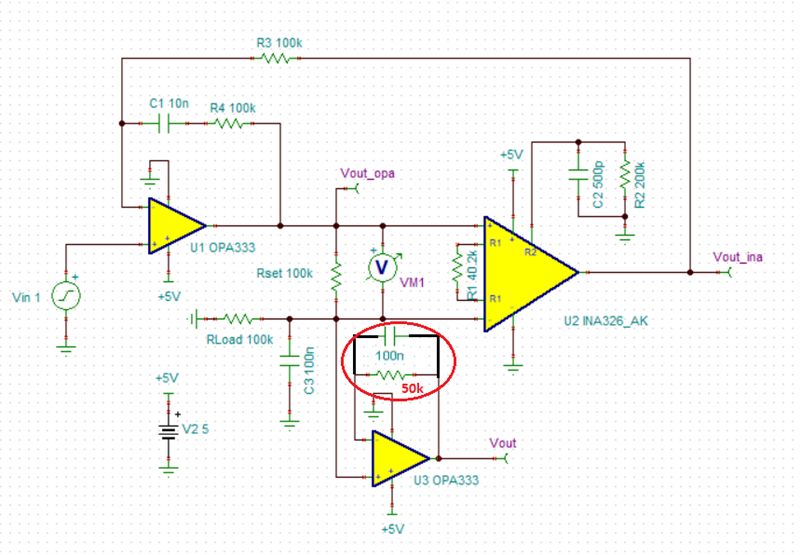Other Parts Discussed in Thread: TLV333, OPA333, OPA391, OPA191
Hi
My circuit uses the TIPD107 reference design to generate 0-5uA current from 0-5V. The modifications I have are inserting a buffer at the same node as my load so that I can track the change in voltage using an ADC (real load will be a variable resistor) and I am sampling every 15secs. My simulation is giving me expected results but the issue is only coming up when I test the real hardware.
My initial setup for validating the system uses a normal resistor and I am observing some voltage spikes in the readings. When I see the spikes, there is a voltage decrease or increase of approximately 5-10% depending on the board. The spikes appear to be happening at random times and do disappear based on the input voltage for some of my boards. The magnitude of the spikes is very consistent within a given board and are in the same direction for that given board. My input to the U1 OPA333(have mostly been using the TLV333 op-amp) is stable when the spikes happen showing that the issue is not coming from a noisy input. The spikes are first observed at the Vout_opa node before they travel across the feedback loop and to the buffer op-amp. I am using resistors with 1% tolerances so the noise can't be coming from them.
Has anyone observed similar spikes/noise in their system or know where the source of the issue is?


